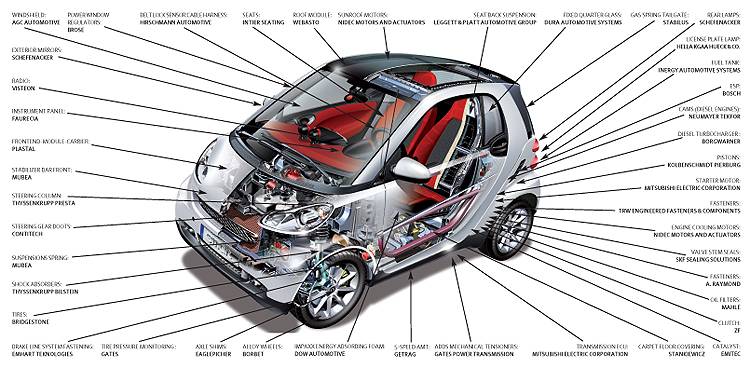The food and beverage industry is one of the largest and most diverse sectors in the global economy. From restaurants to grocery stores, food manufacturers to beverage distributors, this industry touches every aspect of our daily lives. Whether you’re a foodie exploring new culinary trends or a business looking to stay ahead of the curve, understanding the dynamic world of food and beverage is essential. In this blog, we’ll take a closer look at current trends, innovations, and the exciting future of dining.
The Evolution of the Food and Beverage Industry
Over the years, the food and beverage industry has undergone dramatic changes, driven by consumer preferences, technology, and global trade. Historically, food was produced and consumed locally, but as the world became more interconnected, so did the food supply chain. Advances in transportation, refrigeration, and packaging have made it possible to transport foods worldwide, ensuring that a wide variety of flavors are available to consumers everywhere.
Additionally, the growth of dining out and convenience foods has reshaped eating habits. Fast food chains, delivery services, and meal kits are now staples in many households. This shift in dining culture has led to a diversification of food choices, offering everything from gourmet dining to budget-friendly options.
Current Trends in the Food and Beverage Sector
-
Plant-Based Foods: The plant-based movement is one of the biggest trends in recent years. With increasing concerns about health, sustainability, and animal welfare, consumers are turning to plant-based alternatives. From plant-based burgers to dairy-free cheeses, the variety of products available is expanding rapidly. Major food companies are investing heavily in plant-based innovation to meet the growing demand.
-
Health-Conscious Choices: As health and wellness continue to dominate consumer priorities, many are opting for clean-label products—foods with fewer artificial ingredients and additives. Organic, gluten-free, low-sugar, and low-carb options are becoming mainstream, and even traditional snacks and treats are being reimagined to align with healthier lifestyles.
-
Sustainability and Eco-Friendly Packaging: Environmental concerns are leading to increased demand for sustainable food packaging. Consumers want eco-friendly alternatives to plastic, such as biodegradable, recyclable, or compostable materials. Many food companies are also focusing on reducing food waste and sourcing ingredients responsibly to minimize their environmental impact.
-
Fusion Cuisines: The blending of different culinary traditions has given rise to exciting new flavors and food combinations. Fusion cuisines are becoming a popular choice at restaurants, where chefs experiment by combining ingredients from different parts of the world. This trend is also influencing home cooking, with home chefs trying new recipes that incorporate international flavors and techniques.
-
Technology-Driven Experiences: Technology is revolutionizing the food and beverage industry, from AI-driven restaurant ordering systems to augmented reality (AR) menus that offer immersive dining experiences. Even food delivery services are being transformed by the integration of drone deliveries and autonomous vehicles.
-
Alcohol-Free Beverages: The demand for alcohol-free alternatives has risen, with many consumers seeking healthier options or simply wanting to reduce their alcohol consumption. Non-alcoholic wines, beers, and spirits have become increasingly popular, offering the experience of traditional drinks without the effects of alcohol.
Innovations Shaping the Future of Food and Beverage
The future of food and beverage is brimming with innovation, driven by advancements in technology and an increased focus on sustainability. Here are some of the most exciting developments to watch:
-
Lab-Grown Meat: As concerns about the environmental impact of livestock farming grow, lab-grown meat (also known as cultured or cell-based meat) has the potential to disrupt the industry. By cultivating meat from animal cells, this technology promises a sustainable, cruelty-free alternative to traditional meat production, with a smaller carbon footprint.
-
Food Automation: Robots and artificial intelligence are making their way into kitchens and restaurants. From robotic chefs to automated food preparation, these innovations aim to improve efficiency, reduce food waste, and ensure consistency in quality. Even in food packaging and delivery, automation is streamlining operations and reducing labor costs.
-
Personalized Nutrition: Thanks to advances in genetics and data analytics, personalized nutrition is on the rise. Companies are using DNA testing and other technologies to offer tailored meal plans that meet an individual’s specific dietary needs, preferences, and health goals. This personalized approach allows consumers to optimize their nutrition for better overall health.
-
Vertical Farming: With urbanization on the rise and agricultural land becoming scarce, vertical farming has emerged as an innovative solution to grow food in urban environments. Using vertically stacked layers and controlled environments, this method of farming allows for year-round production with minimal space and resources. It’s an exciting way to increase local food production while reducing the need for long-distance transportation.
-
Alternative Proteins: With the growing demand for sustainable and ethical food choices, alternative proteins are becoming a major focus. In addition to plant-based options, companies are exploring insect protein, algae, and other novel sources to create sustainable protein-rich foods. These alternatives are seen as a way to meet global protein demands while reducing the environmental impact of conventional livestock farming.
The Impact of Food and Beverage on Health and Wellness
What we eat and drink plays a crucial role in our overall health and wellness. A balanced diet, rich in nutrients and low in processed foods, can prevent chronic diseases such as obesity, diabetes, and heart disease. As consumers become more conscious of the connection between diet and health, the demand for nutritious, functional foods has increased.
In addition, the rise of mental health awareness has led to a growing interest in foods that support mental well-being. Products containing probiotics, antioxidants, and adaptogens are gaining popularity for their potential to reduce stress, improve mood, and support cognitive function.
The Future of Dining: What’s Next?
The food and beverage industry is constantly evolving, driven by innovation, consumer demand, and technological advancements. We can expect the following trends to continue shaping the future of dining:
-
Experiential Dining: As people seek unique experiences, restaurants will increasingly focus on offering immersive, multisensory dining experiences. From interactive meals to themed environments, dining will become an adventure in itself.
-
Online and Delivery Services: The convenience of food delivery services is here to stay. With the rise of platforms like UberEats, DoorDash, and Grubhub, consumers are looking for more ways to enjoy restaurant-quality meals from the comfort of their homes. Ghost kitchens (delivery-only restaurants) are also on the rise, catering specifically to this demand.
-
Global Flavors: The continued interest in global cuisines will lead to even more fusion and experimentation. As travel restrictions ease and cultural exchanges increase, diners will continue to explore diverse flavors and innovative food combinations.
Conclusion
The food and beverage industry is in the midst of a remarkable transformation. As consumers become more health-conscious, environmentally aware, and open to new experiences, the industry must adapt to meet these evolving needs. From plant-based innovations to lab-grown meat, sustainability to personalized nutrition, the future of food and beverage holds endless possibilities. As we embrace these changes, one thing is clear—our relationship with food will continue to evolve in exciting and unexpected ways.








